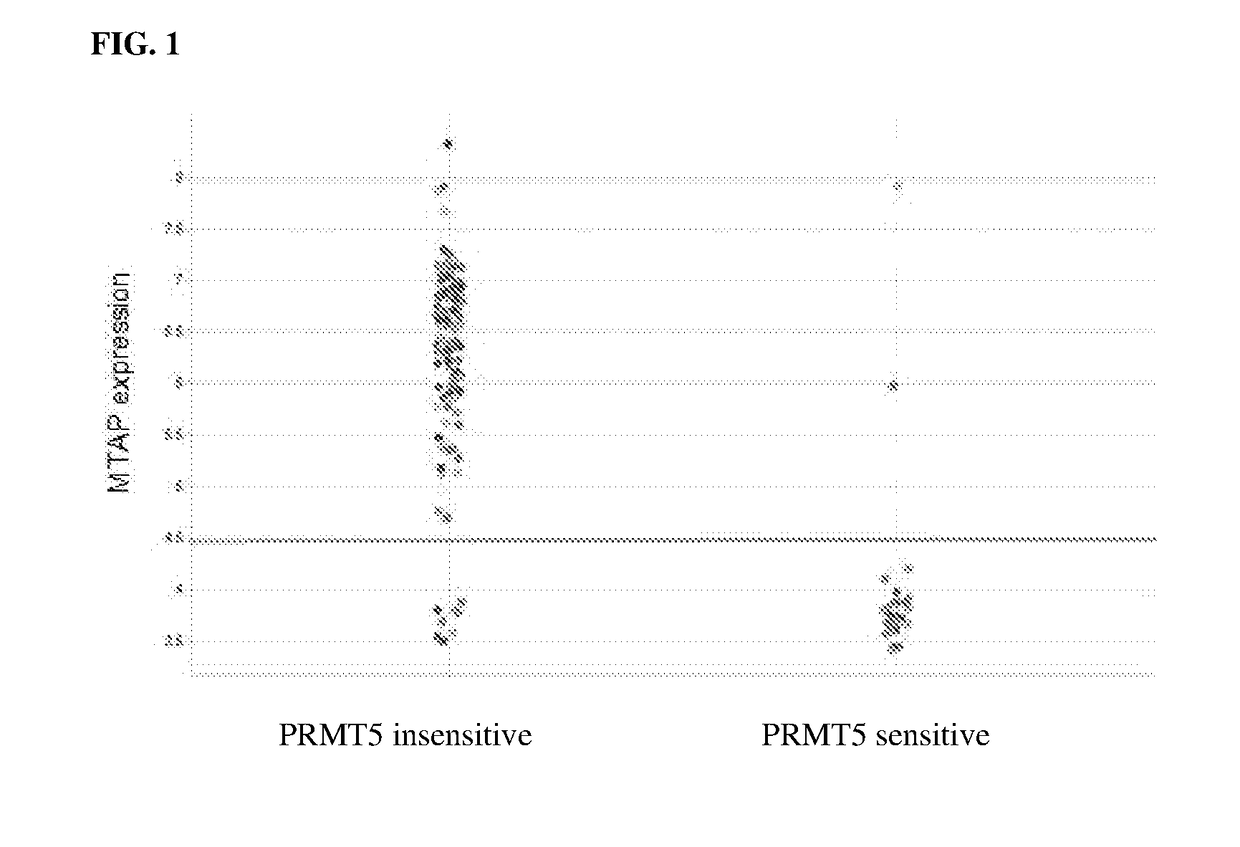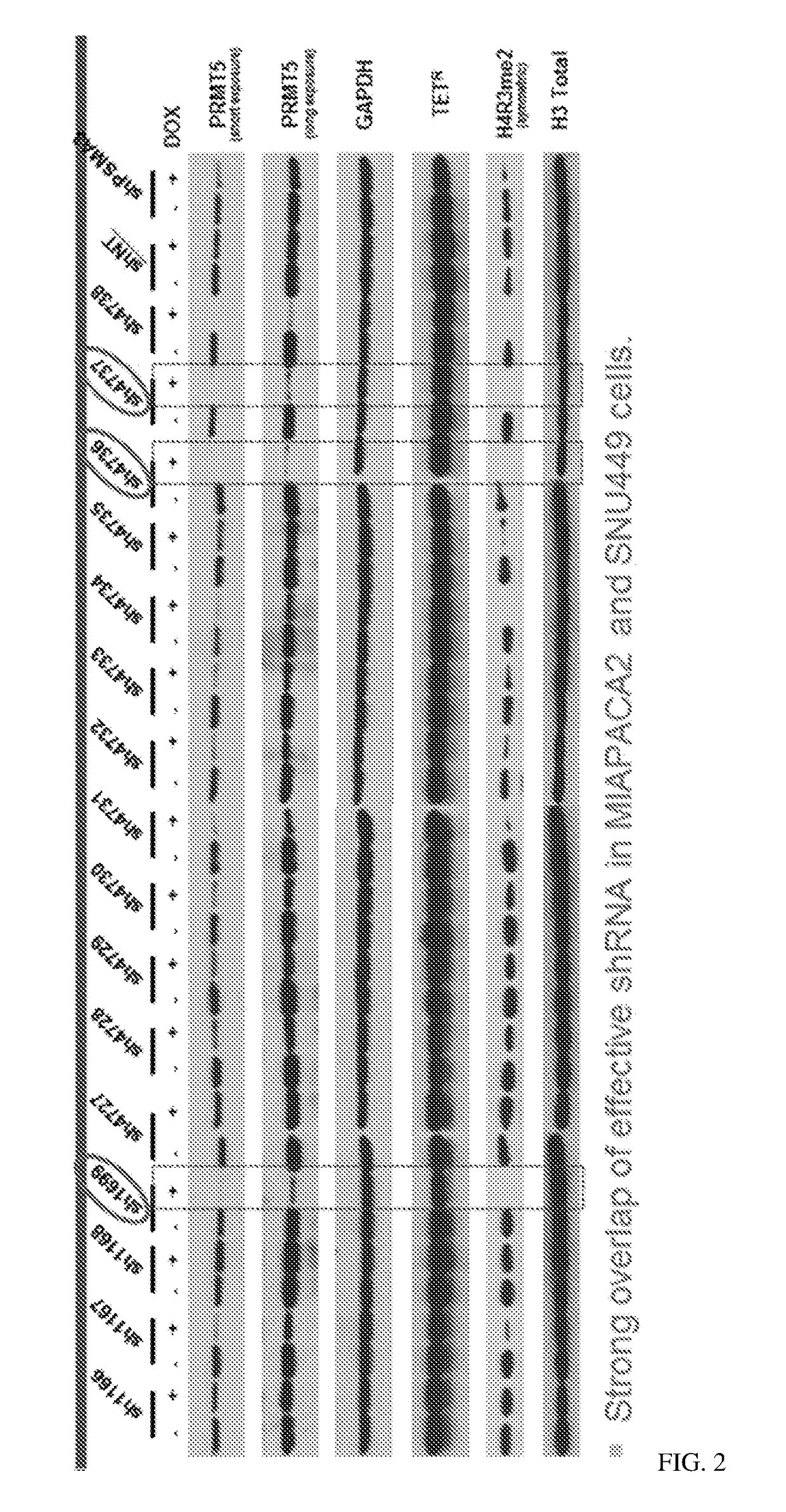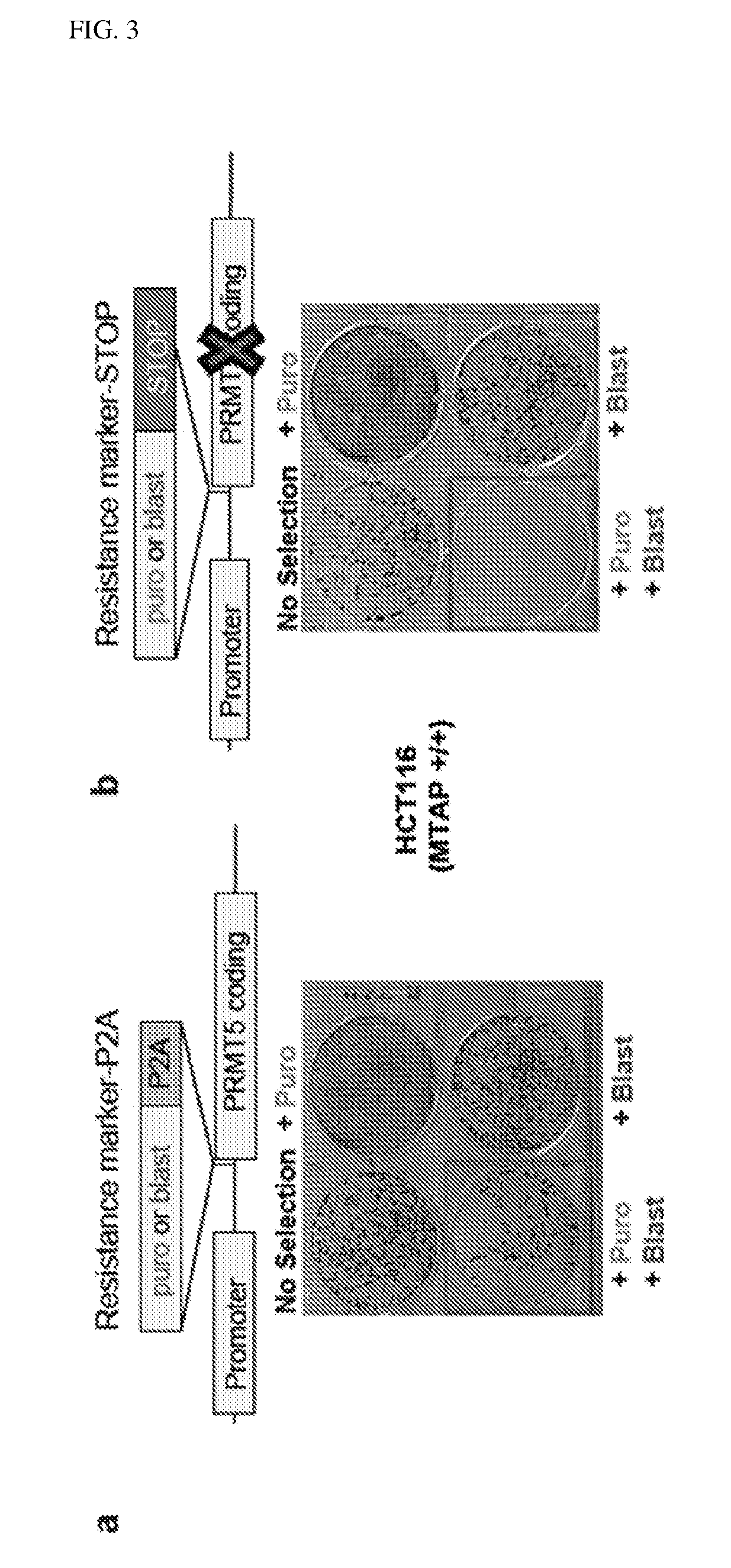Inhibition of prmt5 to treat mtap-deficiency-related diseases
a technology of mtap deficiency and inhibitory protein, applied in the field of mtap deficiency and/or mta accumulation diseases, can solve the problems of poor survival rate of patients with positive microscopic resection margins, and median survival with treatment is only 15 months
- Summary
- Abstract
- Description
- Claims
- Application Information
AI Technical Summary
Benefits of technology
Problems solved by technology
Method used
Image
Examples
example 1
[0534]Materials and Methods
[0535]Library Design and Construction.
[0536]A custom 55,000 element shRNA library focused on enzymes with small molecule ligandable domains was constructed using chip based oligonucleotide synthesis and cloned as a pool into the Bbsl restriction sites of the pRSI16 lentiviral plasmid (Cellecta). The shRNA library targeted 2702 genes with an average of 20 unique shRNAs / gene. The shRNA includes 2 G / U mismatches in the passenger strand, a 7 nucleotide loop, and a 21 nucleotide targeting sequence. Targeting sequences were designed using a proprietary algorithm (Cellecta). The oligo corresponding to each shRNA was synthesized with a unique 22 nucleotide barcode for measuring representation by NGS (Next Generation Sequencing). Sequencing of the plasmid pool showed excellent normalization with >90% clones present at a representation of + / −5-fold from the median counts in the pool.
[0537]Viral Packaging. 2.1×108 293 T cells per plate were plated on multiple 5-layer...
example 2
ation of shRNA Against PRMT5
[0571]shRNA sequences were designed by Cellecta Inc.
[0572]The sequences of the target sequences of the oligonucleotides used are set forth in Table 3, from 5′ to 3′.
[0573]Table 3. The sequences of the target sequences of the PRMT5 shRNA. The shRNAs are divided into two groups, Group 1 and Group 2, wherein Group 1 shRNAs are generally superior.
[0574]The two groups are broken down to reflect in which ATARIS solution they contributed to. The solution group shRNAs are behaving in the same way; the phenotype is the same. In this way we can account for off-target effects. Most of the shRNAs in group 1 track with being synthetic lethal in MTAP-null lines, whereas in group 2 very few of them do. Generally speaking, if the shRNAs are not having an obvious phenotype they also get grouped into 1 solution, which in this case would be group 2.
[0575]Alternative names (from Cellecta) for some of the shRNAs are also presented; for example, PRMT5-1243 is also designated s...
example 3
[0579]Patients suitable to treatment with PRMT5 depletion, can be identified using a number of methods including but not limited to, testing for MTAP deficiency.
[0580]The methods will be briefly described below.
[0581]Testing for MTAP Deficiency
[0582]MTAP deficiency can be tested using any method known in the art. These assays are sensitive for the detection of MTAP deficiency and should identify patients who could benefit from PRMT5 inhibition. For example, MTAP deficiency can be detected using a reagent or technique involving immunohistochemistry utilizing an antibody to MTAP, and / or genomic sequencing, nucleic acid hybridization or amplification utilizing at least one probe or primer comprising a sequence of at least 12 contiguous nucleotides (nt) of the sequence of MTAP provided in SEQ ID NO: 98.
[0583]Screening for mutation and silencing of MTAP gene
[0584]Sequencing and expression studies can be performed to determine deficiency of MTAP gene or its protein...
PUM
| Property | Measurement | Unit |
|---|---|---|
| temperature | aaaaa | aaaaa |
| volume | aaaaa | aaaaa |
| molecular weight | aaaaa | aaaaa |
Abstract
Description
Claims
Application Information
 Login to View More
Login to View More - R&D
- Intellectual Property
- Life Sciences
- Materials
- Tech Scout
- Unparalleled Data Quality
- Higher Quality Content
- 60% Fewer Hallucinations
Browse by: Latest US Patents, China's latest patents, Technical Efficacy Thesaurus, Application Domain, Technology Topic, Popular Technical Reports.
© 2025 PatSnap. All rights reserved.Legal|Privacy policy|Modern Slavery Act Transparency Statement|Sitemap|About US| Contact US: help@patsnap.com



